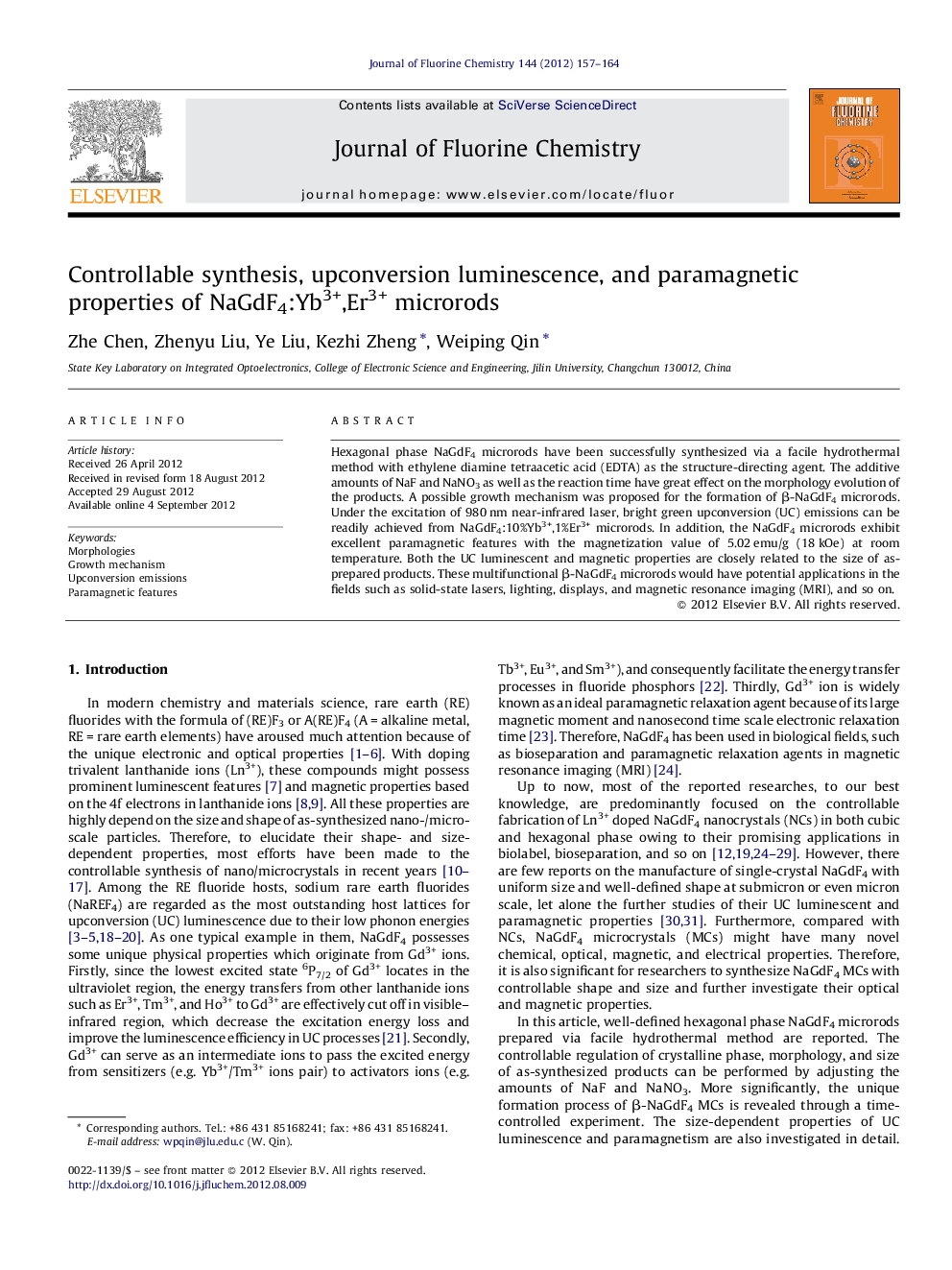| Article ID | Journal | Published Year | Pages | File Type |
|---|---|---|---|---|
| 1313706 | Journal of Fluorine Chemistry | 2012 | 8 Pages |
Hexagonal phase NaGdF4 microrods have been successfully synthesized via a facile hydrothermal method with ethylene diamine tetraacetic acid (EDTA) as the structure-directing agent. The additive amounts of NaF and NaNO3 as well as the reaction time have great effect on the morphology evolution of the products. A possible growth mechanism was proposed for the formation of β-NaGdF4 microrods. Under the excitation of 980 nm near-infrared laser, bright green upconversion (UC) emissions can be readily achieved from NaGdF4:10%Yb3+,1%Er3+ microrods. In addition, the NaGdF4 microrods exhibit excellent paramagnetic features with the magnetization value of 5.02 emu/g (18 kOe) at room temperature. Both the UC luminescent and magnetic properties are closely related to the size of as-prepared products. These multifunctional β-NaGdF4 microrods would have potential applications in the fields such as solid-state lasers, lighting, displays, and magnetic resonance imaging (MRI), and so on.
Graphical abstractWell-shaped hexagonal NaGdF4 microrods have been synthesized via hydrothermal method by using EDTA as surfactant. The size and morphology of as-prepared products can be easily regulated by changing the reaction conditions such as the molar ratio of NaF to Gd3+, addition of NaNO3 and reaction time. Significantly, the upconversion luminescence and paramagnetic properties all show markedly size-dependence.Figure optionsDownload full-size imageDownload as PowerPoint slideHighlights► Well-shaped single-crystal NaGdF4 microrods are first prepared. ► The effects of varied reaction conditions on products are all studied in detail. ► Size-dependent upconversion luminescence is discussed. ► Paramagnetic properties of microrods with different size are also discussed.
